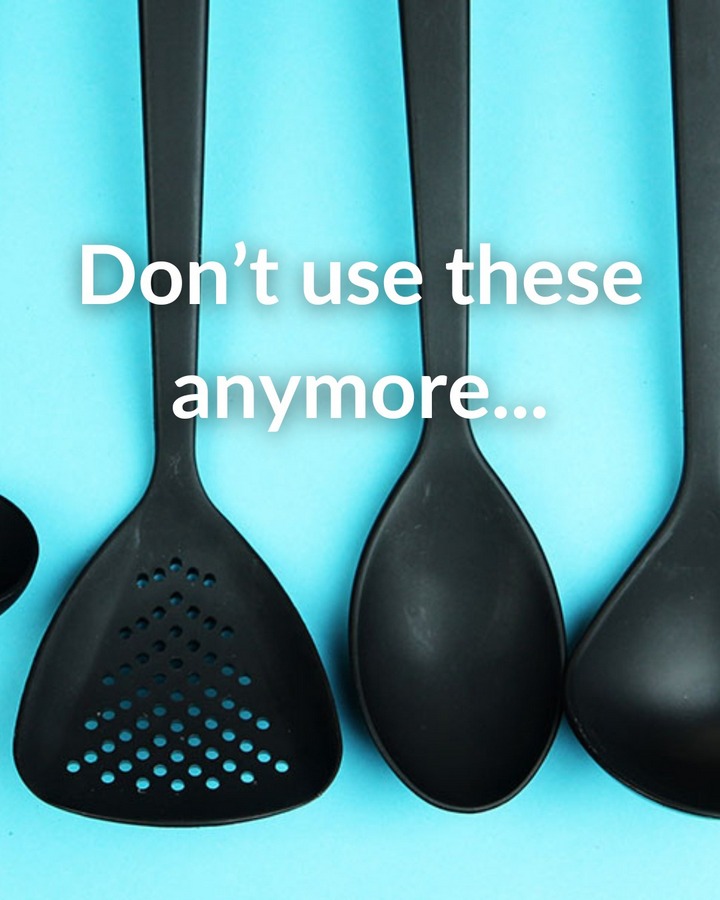ADVERTISEMENT
Here’s an article on Black-Colored Plastic Used for Kitchen Utensils and Toys:
🖤 The Surprising Truth About Black-Colored Plastic Used for Kitchen Utensils and Toys 🖤
Black-colored plastic is a common sight in many of our kitchens and homes, especially in utensils, cookware, and toys. While it might seem like just an aesthetic choice, the use of black plastic in everyday items raises some interesting questions. From its appeal and versatility to the potential health concerns, let’s explore why black plastic is so popular and what you need to know before using or buying these products.
🖤 Why Is Black Plastic Used So Frequently?
Black plastic is incredibly popular in the manufacturing of kitchen utensils and toys, and there are several key reasons for its widespread use.
1. Aesthetic Appeal
- Black is a classic, timeless color that matches with almost everything, which is why it’s favored for items in both modern and traditional kitchens. The sleek, neutral tone helps these products look stylish and elegant, fitting well with a wide range of décor styles.
2. Durability
- Black plastic is often associated with certain types of polymers like polypropylene, which are strong, long-lasting, and resistant to wear and tear. This makes it a great choice for kitchen tools, like spatulas, cutting boards, and measuring spoons, as well as toys that need to withstand heavy usage and rough handling.
3. Heat Resistance
- Many black plastics are heat-resistant, which makes them ideal for kitchen utensils like spoons, spatulas, or serving tongs that need to endure the high temperatures of cooking. The dark color tends to absorb heat, which can make plastic materials more resistant to the deformation caused by prolonged exposure to heat.
4. Cost-Effective
- Black plastic is relatively cheap to produce, which is why it’s commonly used in products like toys and everyday kitchen items. The low cost makes it affordable for both manufacturers and consumers, leading to its frequent use in mass-produced goods.
🧸 Concerns with Black Plastic in Toys and Kitchen Utensils
While black plastic may have practical benefits, it’s important to be aware of some potential health and environmental concerns associated with its use.
1. Chemical Additives and Health Risks
- One of the main concerns with black plastic, especially in toys and kitchen utensils, is that it often contains chemical additives to achieve its color. Many black plastics are dyed with carbon black, a pigment made from soot, which has raised safety concerns in the past.
- Carbon black has been linked to health risks when inhaled in its pure form, and it’s been classified as a possible carcinogen by the International Agency for Research on Cancer (IARC). However, the risks from carbon black in consumer products like utensils and toys are typically minimal because it is bound within the plastic and not easily released into the air. Still, if you are concerned about potential exposure, it’s always wise to choose products that are BPA-free and non-toxic.
2. Leaching of Harmful Substances
- Another concern with black plastic products, particularly when exposed to heat, is the potential for leaching of chemicals such as phthalates or BPA (bisphenol A). These chemicals are known to disrupt hormones and may cause other health issues. The risk is especially high in plastic cookware that is subjected to high temperatures, such as frying pans or plastic utensils used with hot foods.
- To mitigate this, look for products that are specifically labeled as BPA-free, phthalate-free, and food-safe. Many manufacturers are moving toward safer plastic alternatives for these reasons.
3. Environmental Impact
- While black plastic is often durable, it has a significant environmental impact due to the difficulty in recycling it. The carbon black dye used in black plastic products makes it difficult to identify during recycling, meaning much of it ends up in landfills. Unlike transparent plastics, which can be easily identified and recycled, black plastics often get sorted out as waste in recycling facilities.
- As consumers become more environmentally conscious, there is growing pressure on manufacturers to find sustainable alternatives or use recycled plastics that are easier to process. This is especially important for items like toys, which are often disposed of once they become damaged or outgrown.
